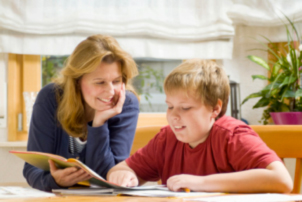CP is a central nervous system disorder (see full Glossary). When a child has CP, his or her brain is unable to fully control muscles and movement, because of injury or damage to one of more if its parts. CP is non-progressive. This means it does not get worse with age. However, lack of early intervention could lead to stiffer muscles and more restricted movement. This is not due to of the CP itself, it is the result of lack of environmental support. Early intervention is therefore crucial for all children with CP.
Some of the causes of CP are known. CP can result from injury to the brain pre- (before), peri- (during), or post-natally (after the birth):
- Pre-natal reasons include: maternal infection, drug and alcohol use and genetics (see full Glossary);
- Peri-natal reasons include: anoxia, which is lack of oxygen to the brain during labor;
- Post-natal reasons: severe trauma to the head (for example, a car accident), near-drowning accidents and severe physical abuse, including shaking the baby.
There are many ways of classifying CP. It can be classified according to the location of brain injury. It can also be classified according to how the injury is affecting movement. Please refer to the cerebral palsy section of the birth to six course, in order to learn more about the different types of cerebral palsy.
Because CP is a central nervous system disorder, about 50% of children with CP also have an intellectual disability (formerly known as mental retardation). Other children with CP can have the following co-morbid (that is, co-existing) disorders:
- Learning disabilities;
- ADHD;
- Difficulties seeing or blindness;
- Difficulties hearing or deafness;
- Epilepsy;
- Sensory integration difficulties (see full ECI Glossary).
Children with CP can benefit from the following services:
- Special education services (Fig. 1): most children with CP will have an Individualized Education Plan (IEP) at school. The special educator will serve on the IEP team. The special educator, along with other members of the team, will assist the regular education teacher in planning an individualized program for the child with CP;
Figure 1. Special education services
- Physiotherapy (PT): the physio-therapist will help the child with CP improve his or her gross motor skills. The PT will help the child with CP increase his or her range of motion and learn how to use adaptive equipment, such as wheelchairs or walkers;
- Occupational therapist (OT): the OT will help the child with CP improve his or her fine motor and oral/motor skills. He or she will help the child with CP improve the dexterity in his or her fingers and use adaptive equipment (see full Glossary) (such as adaptive spoons and pencils). The OT can also help children with CP improve the muscles in the oral/motor area (these are the muscles that surround the mouth). OTs with special training in sensory integration therapy (see ECI Glossary) will help children with CP with any sensory difficulties they may be experiencing;
- Speech and language pathologist (SLP): SLPs will help children with CP improve all aspects of their communication skills: they will help them improve their receptive and expressive language skills, and will also help them with articulation difficulties (which could be resulting from difficulties in the oral/motor area);
- Vision specialist: some children with CP have vision problems. In these cases, regular check-ups with an ophthalmologist (Fig. 2) are highly recommended;
- Hearing specialist: some children with CP have hearing difficulties. In these cases, regular check-ups with a hearing specialist are highly recommended;
- School counselor: some children with CP have low self-esteem and little self-confidence. In such cases, regular visits with the school counselor could prove very useful;
- Mental health professional: if a child with CP is overly anxious or sad, they may need help from a clinical psychologist CP).
Figure 2. Ophthalmologist
Most children with CP are fully integrated into regular classrooms, where they do quite well. Children with cerebral palsy have the right for assistance in the classroom with a school support teacher or educational assistant. Depending on the type of cerebral palsy, they will receive a designation in the school system and will have the right to have an Individualized Educational Plan with the classroom and resource teacher. Some of them may require some adaptations that will help them with their intellectual, language and/or motor work. Many grow up to lead fulfilling lives.

